The Ward Museum of Salisbury, Maryland, is the image of the local community. From their appreciation of the local historical craft to their respect for the environment, the museum is a dedication to the local area. Salisbury, Maryland, sits in the Chesapeake Bay region. The Chesapeake Bay is the largest freshwater estuary in the world. Towns built in the area of the bay mainly subsist off of the Chesapeake’s natural resources (seafood and tourism); therefore, the local communities hold great value and respect for the environment. The Ward Museum represents art, education, and history of the Maryland communities around the Chesapeake Bay.
Established in 1968, the Ward Foundation intended to preserve and promote wildfowl art and local legends, Eastern Shore decoy carvers: Lem and Steve Ward. The Ward Foundation was created near the end of Ward’s brother’s career. As is typical with small local museums and foundations, the Ward Foundation/Museum carries a detailed natural history.
Although he was a barber by trade, Travis Ward (the father of Lem and Steve Ward)became a revolutionary decoy carver in the area during the 19th century. The brothers, Lem and Steve, took after their father and worked as barbers in Crisfield, Maryland. Growing up on the Chesapeake Bay, the brothers were avid fishermen and waterfowl hunters. From these hobbies and encouragement from their father, they began carving decoys for hunting waterfowl.
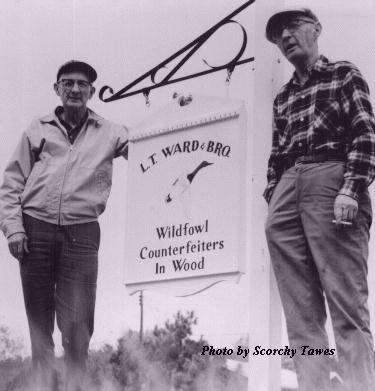
Lem and Steve Ward began producing and selling hand-carved decoys to local hunters in the 1920s. They quickly established their own business named L.T. Ward Bros. of Crisfield, Maryland. By the 1930s, the Great Depression worsened, and the brothers’ business was booming. They were making incredibly realistic pieces that were proving to be successful on hunting trips. With the Great Depression, most families could not afford to buy their standard food supplies; consequently, providers turned to hunting. Self-subsistence in the Chesapeake Bay area during the 30s focused on waterfowl hunting. Hence, more people needed decoys, so the Ward brothers’ sales drastically increased.
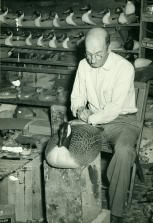
The brothers, specifically Lem, consistently experimented with new carving and painting techniques to get as accurate and lifelike as possible. Their innovation and drive for realism are what separated them from other decoy carvers. Surprising to many Ward enthusiasts, neither brother attended art school. Their skills were purely natural and refined over the years from a determination to make the best product. Unfortunately, L.T. Ward Bros. decoy production and sales lowered dramatically in the 1950s due to the extreme rise in production and cheaper mass-manufactured plastic decoys.
To supplement their lowered sales, Lem and Steve Ward altered their product and customer base. The brothers were known for their decoys because of their mastery of intense realism. Therefore, it was a smooth transition for producers, artists, and a business to start selling and making mostly mini and life-size decorative birds.
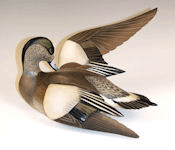
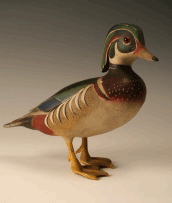
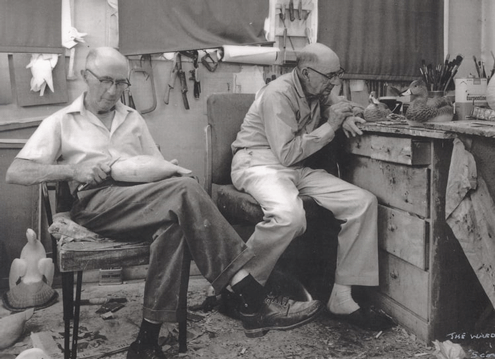
For the remainder of their careers, the brothers continued to strive to perfect their work. Although L.T. Ward Bros. is located in Little Crisfield, Maryland, the brothers filled orders worldwide to both individual buyers and large hunting suppliers. They filled orders from California to Venezuela during operations. In 1964, the pair were featured in the September issue of National Geographic. By 1972, the Ward brothers were both awarded honorary doctorates from Salisbury University. Their success did not stop there. Lem Ward won the National Heritage Fellowship from the National Endowment for the Arts in 1983.
Steve Ward passed away in 1976 and Lem Ward in 1984, and the brothers worked as late into their lives as they could and held significant value to small-town artists. The Ward Foundation eventually built a museum in the brothers’ name: The Ward Museum. Since 1992, the museum has resided on Schumaker Pond. In 2000, the foundation donated the museum to Salisbury University and became an affiliated foundation to the university.
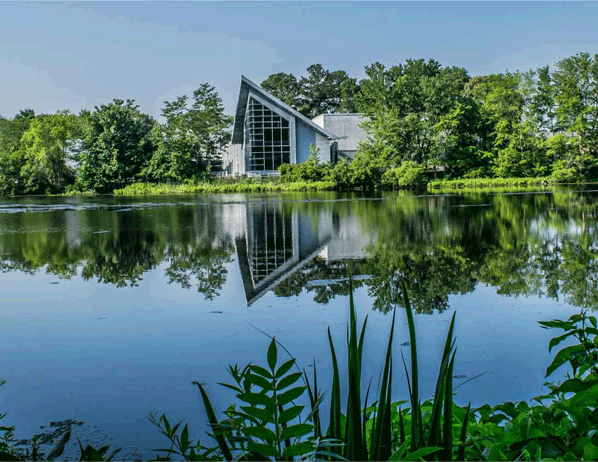
Today, the Ward Museum works to “create spaces and opportunities for learning about artistic traditions, community, heritage, and connections to the natural environment.” The museum offers unique experiences directly linked to the Ward brothers. For instance, a Carving Club is free to the public and provided for all skill levels. Moreover, in light of the COVID-19 pandemic, they offer a wide variety of virtual learning opportunities. The Ward Foundation and museum consistently work to uphold an appreciation for local artistic, environmental, and community history. If you’re interested in the artwork of the Ward brothers, or the world’s largest freshwater estuary, check out the Ward Museum for some education and community.
